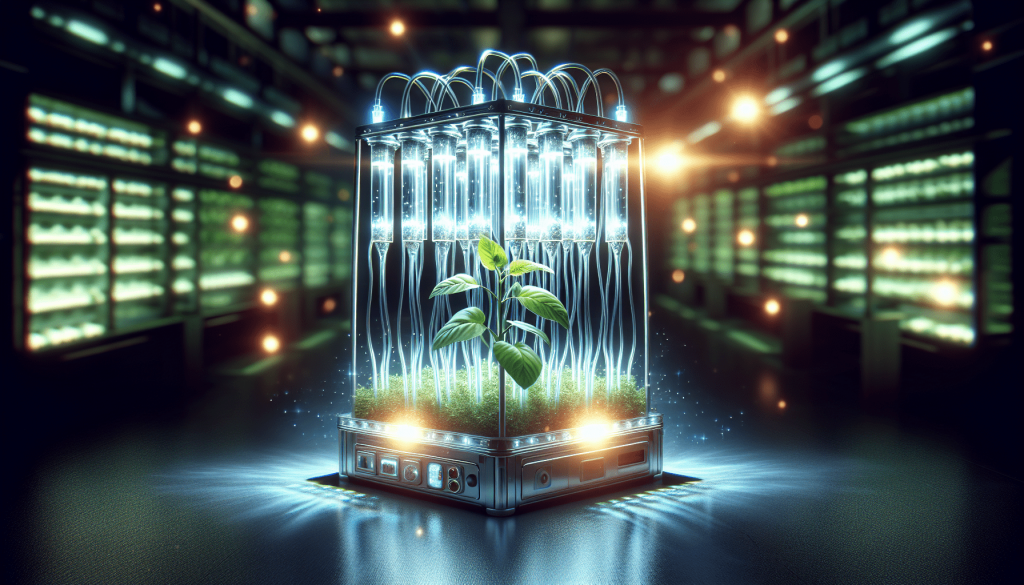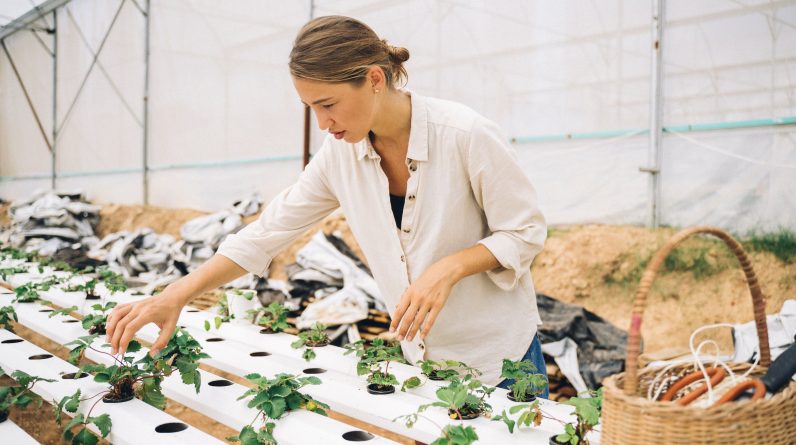
Are you interested in exploring a more efficient and sustainable way to grow your own plants? Look no further! In this step-by-step guide, you will discover how to set up your very own hydroponic growing system. Say goodbye to traditional soil-based gardening and say hello to a method that requires less water, less space, and yields higher crop yields. Whether you’re an experienced gardener or just starting out, this user-friendly guide will walk you through each step, empowering you to create your own thriving hydroponic garden. Let’s get started!
Choosing the Right Location
When setting up a hydroponic growing system, choosing the right location is crucial. First, you need to evaluate the available space in your home or garden. Consider the size of your hydroponic system and ensure that it will fit comfortably in the chosen location.
Additionally, access to water and electricity is essential for a successful hydroponic setup. Make sure that your chosen location has a water source nearby and access to electricity. This will enable you to easily provide water and nutrient solutions to your plants, as well as power any necessary equipment like water pumps or grow lights.
Proper ventilation is another factor to consider. Hydroponic systems require good air circulation to prevent the growth of mold and fungi. Choose a location that allows for proper airflow, or consider installing fans or ventilation systems to ensure a healthy environment for your plants.
Gathering the Necessary Supplies
Before you can start setting up your hydroponic system, it’s important to gather all the necessary supplies. Here are the key items you’ll need:
-
Growing Container: Choose a container that is suitable for hydroponic growing. This can be a plastic or glass container with adequate depth and drainage holes.
-
Hydroponic Growing Medium: Acquire a suitable growing medium, such as rockwool, perlite, or coconut coir. This will provide support for the plants and help distribute water and nutrients.
-
Appropriate Nutrients: Select hydroponic nutrients that are specifically formulated for the types of plants you will be growing. These nutrients should contain a balanced ratio of essential minerals.
-
pH Testing Kit: pH levels are critical for plant growth in hydroponic systems. Purchase a pH testing kit to monitor and adjust the pH of your nutrient solution.
-
Hydroponic System Components: Depending on the type of hydroponic system you choose, you may need additional components such as water pumps, tubing, air stones or diffusers, and grow lights.
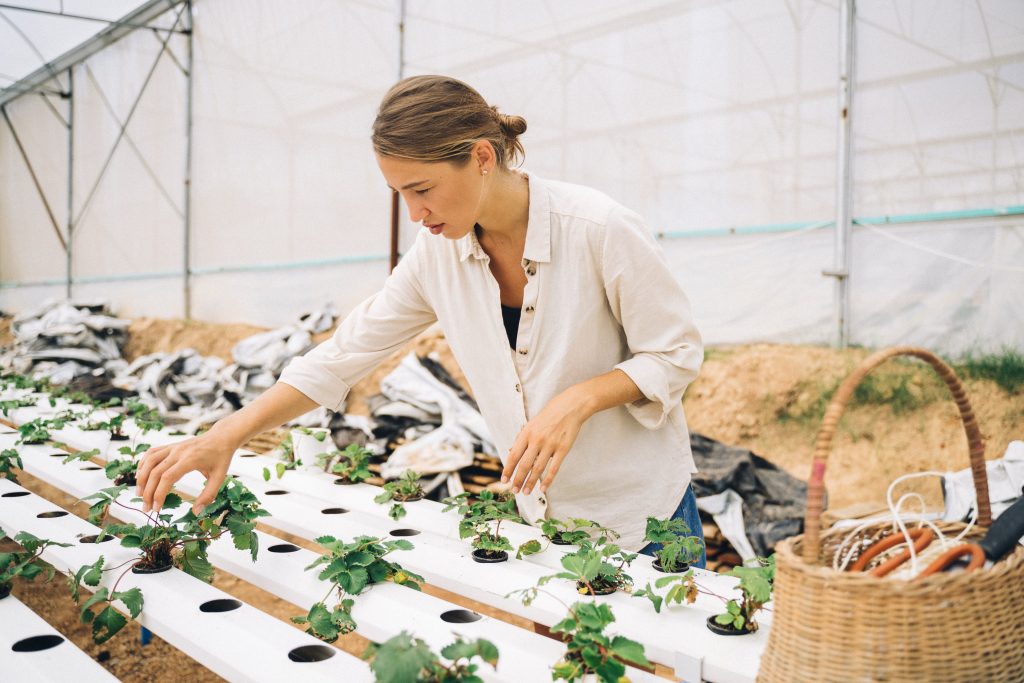
Setting Up the Growing Container
Once you have gathered all the necessary supplies, it’s time to set up your growing container. Follow these steps:
-
Clean and Sanitize the Container: Before use, thoroughly clean and sanitize your growing container to eliminate any potential contaminants. This will create a clean and sterile environment for your plants.
-
Create Drainage Holes: To ensure proper drainage, create drainage holes in the bottom of the container. This will prevent water from pooling and potentially rotting the roots of your plants.
-
Line the Container with a Barrier: To prevent the growing medium from falling out of the container, line the bottom with a barrier such as a piece of landscaping fabric or a mesh screen.
-
Fill Container with Growing Medium: Fill the container with your chosen hydroponic growing medium. Ensure that it is evenly distributed and provides enough support for the plants.
Assembling the Hydroponic System
Now that the growing container is set up, it’s time to assemble the rest of your hydroponic system. Follow these steps:
-
Connect Water Pump and Tubing: If your hydroponic system requires a water pump, connect it to the tubing that will distribute water to your plants. Ensure that the tubing is securely attached and free from any kinks or obstructions.
-
Install Air Stones or Diffusers: Oxygenation is crucial for healthy root growth. If your system requires it, install air stones or diffusers in the container. These will help aerate the water and provide oxygen to the plant roots.
-
Set Up a Reservoir for Nutrient Solution: If your system utilizes a reservoir, set it up nearby. This will hold the nutrient solution for your plants. Make sure it is easily accessible for refilling and monitoring nutrient levels.
-
Attach Grow Lights (If Applicable): Depending on the location and lighting conditions, you may need to install grow lights to provide sufficient light for your plants. Follow the manufacturer’s instructions for proper installation.
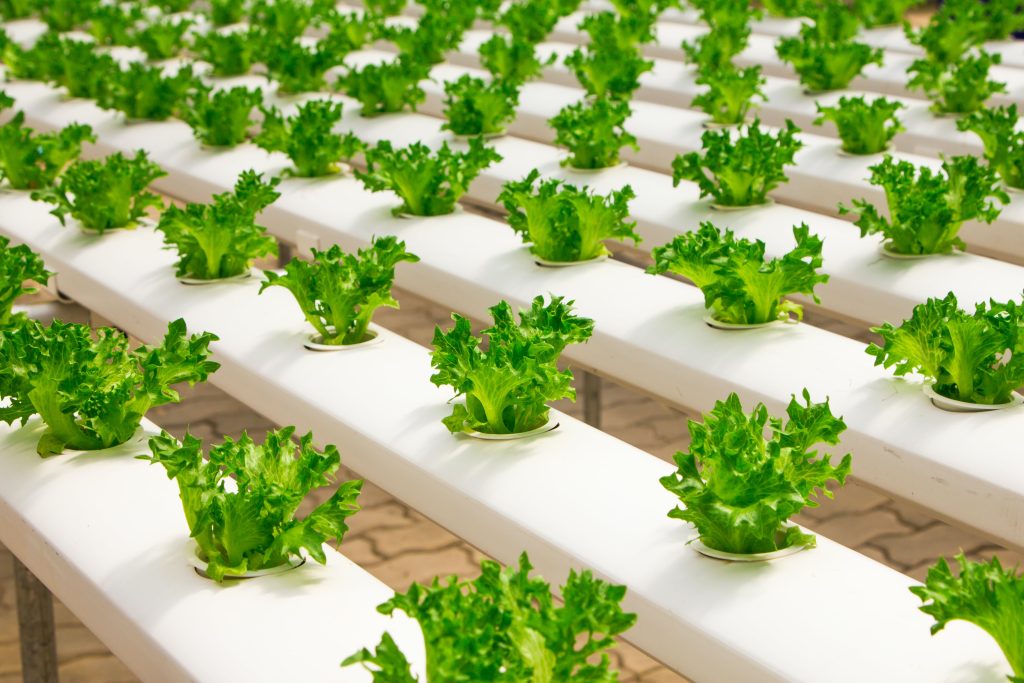
Preparing the Nutrient Solution
One of the key advantages of hydroponic systems is the ability to provide precise and optimized nutrient solutions for your plants. Here’s how to prepare the nutrient solution:
-
Determine Appropriate Nutrient Ratios: Different plants have different nutrient requirements. Research the optimal nutrient ratios for the specific plants you are growing and ensure your nutrient solution matches those ratios.
-
Mix Nutrients with Water According to Instructions: Follow the instructions provided with your hydroponic nutrient solution to mix the appropriate amount of nutrients with water. Different formulas may require different concentrations, so it’s important to measure accurately.
-
Adjust pH of the Solution: Use the pH testing kit to measure the pH of your nutrient solution. Adjust the pH as necessary to ensure it falls within the optimal range for your plants. Most plants prefer a slightly acidic pH around 5.5 to 6.5.
Planting Seeds or Seedlings
Now that your hydroponic system is ready and your nutrient solution is prepared, it’s time to plant your seeds or seedlings. Follow these steps:
-
Select Suitable Plant Varieties for Hydroponics: Not all plants are well-suited for hydroponic growing. Choose plants that have been proven to grow successfully in hydroponic systems. Leafy greens, herbs, and some vine crops are popular choices.
-
Start Seeds in Rockwool or Other Growing Medium: Place your seeds in a suitable growing medium, such as rockwool cubes or other hydroponic growing media. Follow the instructions on the seed packet for proper planting depth and spacing.
-
Transplant Seedlings into the Hydroponic System: Once your seedlings have developed a strong root system and a few sets of leaves, carefully transplant them into your hydroponic system. Place the roots gently into the growing medium and ensure they are securely supported.
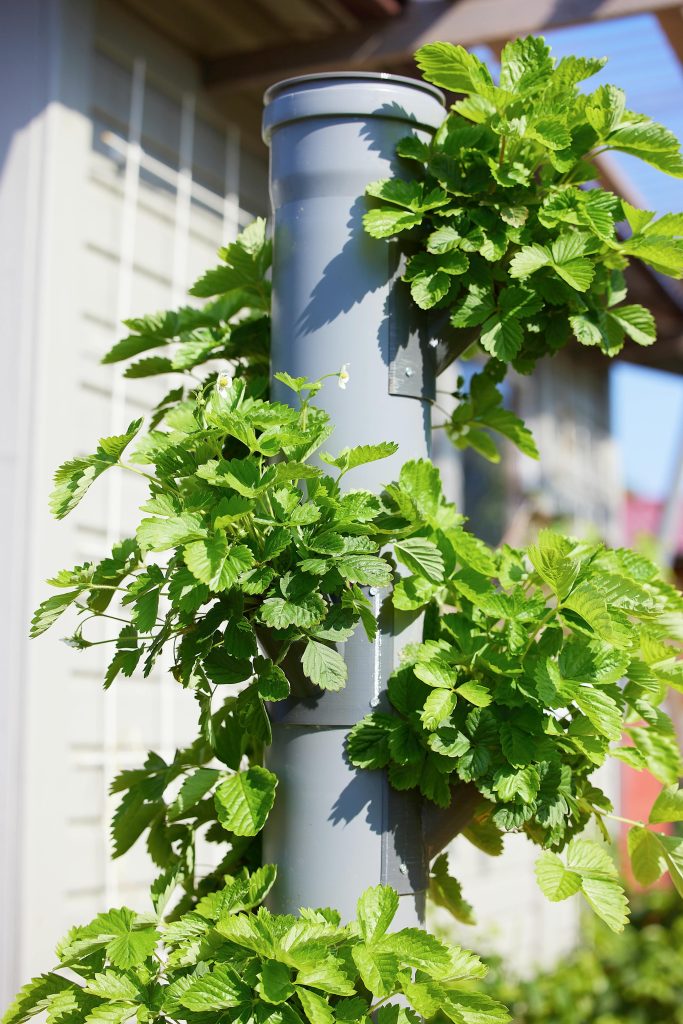
Maintaining the Hydroponic System
To ensure the success of your hydroponic system, regular maintenance is necessary. Here are some important tasks to keep in mind:
-
Monitor Water Levels and Nutrient Solution: Check the water level in your hydroponic system regularly and refill as needed. Monitor the nutrient solution levels and replenish according to the instructions provided with your nutrient solution.
-
Check pH Regularly: Test the pH of your nutrient solution regularly, ideally daily or every other day. Adjust the pH as needed to maintain optimal growing conditions for your plants.
-
Inspect for Pests or Diseases: Regularly inspect your plants for any signs of pests or diseases. Remove any affected plants or take appropriate action to address the issue, such as applying organic pest control methods or using beneficial insects.
-
Clean and Sanitize the System Periodically: To prevent the buildup of algae, bacteria, or other contaminants, clean and sanitize your hydroponic system every few weeks. Disassemble the system, clean all components, and disinfect with a mild bleach solution or a commercial hydroponic system sanitizer.
Providing Proper Lighting
Proper lighting is vital for the photosynthesis process and overall plant growth in a hydroponic system. Here’s what you need to consider:
-
Choose Appropriate Grow Lights: Different plants have different light requirements. Select the appropriate type of grow lights for your plants, such as fluorescent, LED, or high-intensity discharge (HID) lights. Consult the lighting guidelines for the specific plants you are growing.
-
Set Up the Lighting Schedule: Plants require a balance of light and darkness. Create a lighting schedule that mimics the natural light cycles for your plants. This typically involves providing around 12-16 hours of light per day, followed by 8-12 hours of darkness.
-
Adjust Light Intensity as Plants Grow: As your plants grow and mature, adjust the height and intensity of your grow lights to accommodate their changing needs. Keep lights at an optimal distance to prevent burning or light-induced stress on your plants.
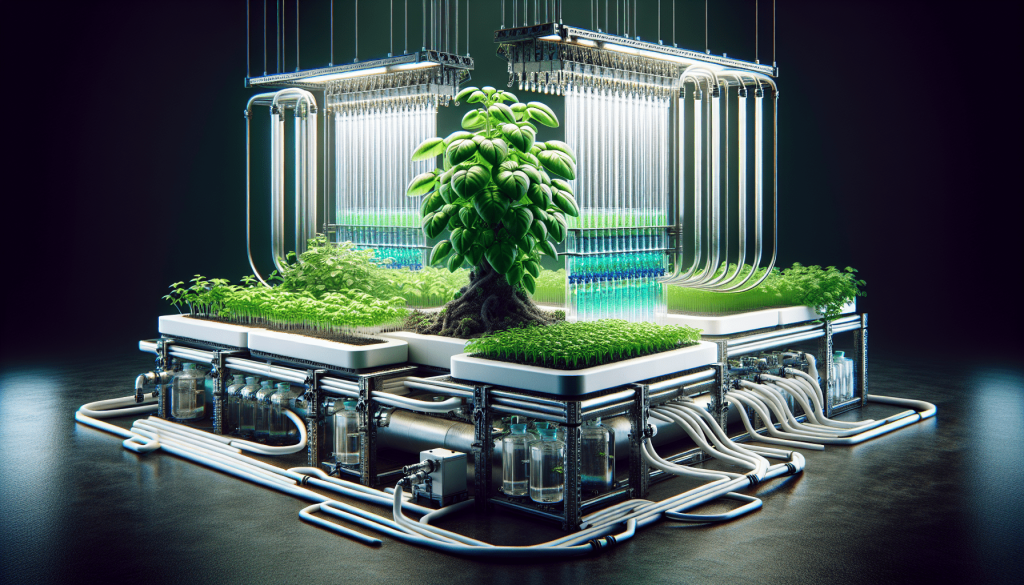
Monitoring and Adjusting Nutrient Levels
Regularly monitoring and adjusting the nutrient levels in your hydroponic system is essential for healthy plant growth. Here’s what you need to do:
-
Measure Electrical Conductivity (EC): Measure the electrical conductivity of your nutrient solution using an EC meter. This indicates the concentration of dissolved minerals in the solution. Follow the recommended EC levels for your specific plants and adjust accordingly.
-
Adjust Nutrient Solution Strength if Needed: If your plants show signs of nutrient deficiencies or excesses, adjust the strength of your nutrient solution accordingly. Increase or decrease the concentration of nutrients to maintain optimal levels for healthy plant growth.
-
Supplement with Additional Nutrients as Required: Some plants may require additional nutrients at different stages of growth. Monitor your plants closely and provide any necessary supplemental nutrients to address specific deficiencies or support optimal growth.
Harvesting and Enjoying the Fruits of Your Labor
Finally, the moment you’ve been waiting for – harvesting your hydroponically grown produce! Make sure to follow these steps for a bountiful and enjoyable harvest:
-
Harvest Plants at the Right Stage of Maturity: Each plant variety has its own ideal stage of maturity for harvest. Pay attention to the recommended harvest times for your specific plants and harvest when the fruits or vegetables are ripe and ready.
-
Store or Use Harvested Produce: Once harvested, handle your produce with care. Store it properly to maintain freshness and flavor. Hydroponically grown produce tends to have a longer shelf life compared to traditional soil-grown crops, so you can enjoy your harvest for longer.
-
Repeat the Process for Continuous Harvests: Hydroponic systems are designed for continuous production. After harvesting, clean and reset your system, and start the process again with new seedlings or seeds. With proper care and maintenance, you can enjoy a continuous supply of fresh, homegrown produce all year round.
Setting up and maintaining a hydroponic system may seem daunting at first, but with the right guidance and a little effort, anyone can successfully grow plants hydroponically. By following these step-by-step instructions, you’ll be well on your way to enjoying the benefits of a thriving hydroponic garden. Happy growing!
